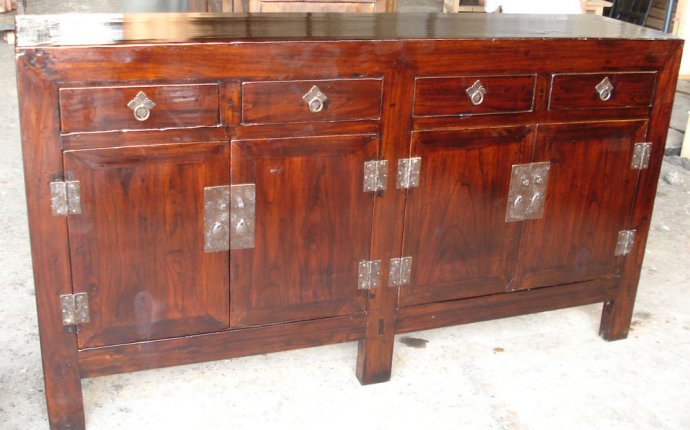
Chinese antiques Furniture
 The craftsmanship of traditional Chinese furniture is unrivaled. Constructed without nails or screws, antique cabinets, tables, and beds are held together by carefully carved joints that fit one another like individually forged locks and keys. Many Chinese antiques were crafted centuries ago, and—with the proper care—will continue to last several lifetimes.
The craftsmanship of traditional Chinese furniture is unrivaled. Constructed without nails or screws, antique cabinets, tables, and beds are held together by carefully carved joints that fit one another like individually forged locks and keys. Many Chinese antiques were crafted centuries ago, and—with the proper care—will continue to last several lifetimes.
Prized Patinas
Furniture-makers of the past incorporated handmade paints and lacquers into their designs. Today, the craft of antique lacquer is a lost art. When Chinese antiques first became popular in the West, many people stripped the furniture of its original patina, unknowingly reducing its value. As collectors became more educated about the nature of Chinese furniture, original patina became more and more prized. Antiques retaining their patina are among the most highly respected and sought-after pieces.
Caring for Lacquered and Painted Finishes
Although hard and glossy, antique lacquer and paint finishes can also be quite brittle. Avoid chipping or scratching lacquer by moving furniture with care and keeping surfaces clear of sharp or heavy objects. Do not use water, oil or solvents on the surface. For daily cleaning, use a soft, dry cloth. If the surface is dull or dirty, lightly polish it using a high-quality clear paste wax.
Maintaining Furniture Finishes
Unpainted wood furniture should be waxed—not sanded, stained, or lacquered. Altering the original wood finish will detract from its value. In the case of lacquered or painted pieces, the dealer or craftsman should determine whether the finish is old or new. If the finish is new, the craftsman can sometimes strip or replace it without damaging the furniture’s value. If the finish is antique, it should be kept in tact as much as possible, with damaged areas cleaned or repaired by a professional.
Humidity and Dryness
Constructed largely from wood, Chinese furniture is designed to expand and contract with moderate seasonal changes. To prevent wood from drying out in the winter months, a simple solution is to keep a cup full of water inside a cabinet or drawer. In humid summer months, basic air conditioning or a dehumidifier will keep the wood from warping. To prevent cracking, treat unpainted wood with a fine, clear furniture paste wax every six months—more in a dry climate, less in a humid environment.
Cleaning Wood Furniture
Do not clean antique wood with wet cloths, oils, or spray wax. For daily cleaning, use a dry cloth. To clean heavily carved areas when dust or dirt builds up, use a soft toothbrush lightly coated in a high quality paste wax. Regular waxing of the entire piece—every six months or so—will keep antique wooden furniture in top form.
Restoring Broken Furniture
Proper repair of Chinese antiques requires an inherent understanding of the object’s nature. We recommend contacting the original dealer for recommendations if your furniture requires restoration. A skilled craftsman will disassemble the furniture without damaging it, fix the broken part(s), and correctly reassemble the piece.
Floating Panels
Many Chinese antiques, such as cabinets and sideboards, were designed with floating panels in the center. Over time, these panels may expand and contract, sometimes leaving a small gap or white space when the panel moves. Depending on the width of the gap between panels, the seam can be darkened by a conservator. If the gap is significant, a conservator may fill the seam with a piece of antique wood. These gaps are a normal result of the wood’s expansion and contraction over many years, and do not generally effect the value of a piece.
Over the last 20 years, PAGODA RED has collaborated closely with museums, conservators and collectors. Should you have questions about a PAGODA RED purchase or care of your antique, call us at 888-878-8628.









